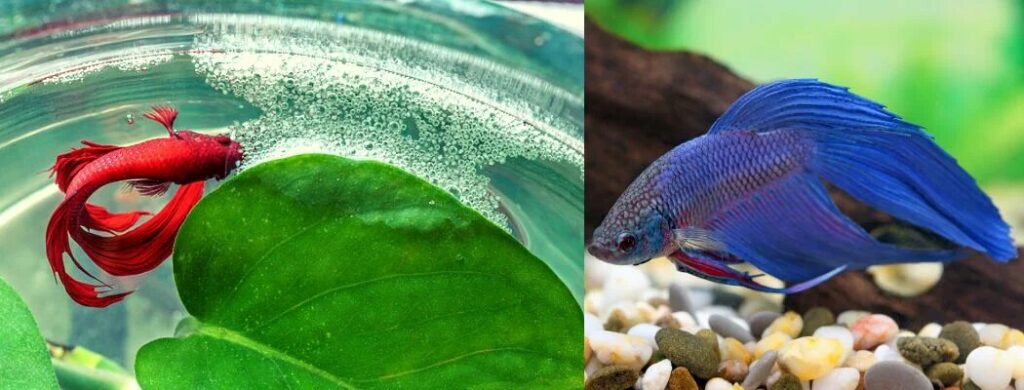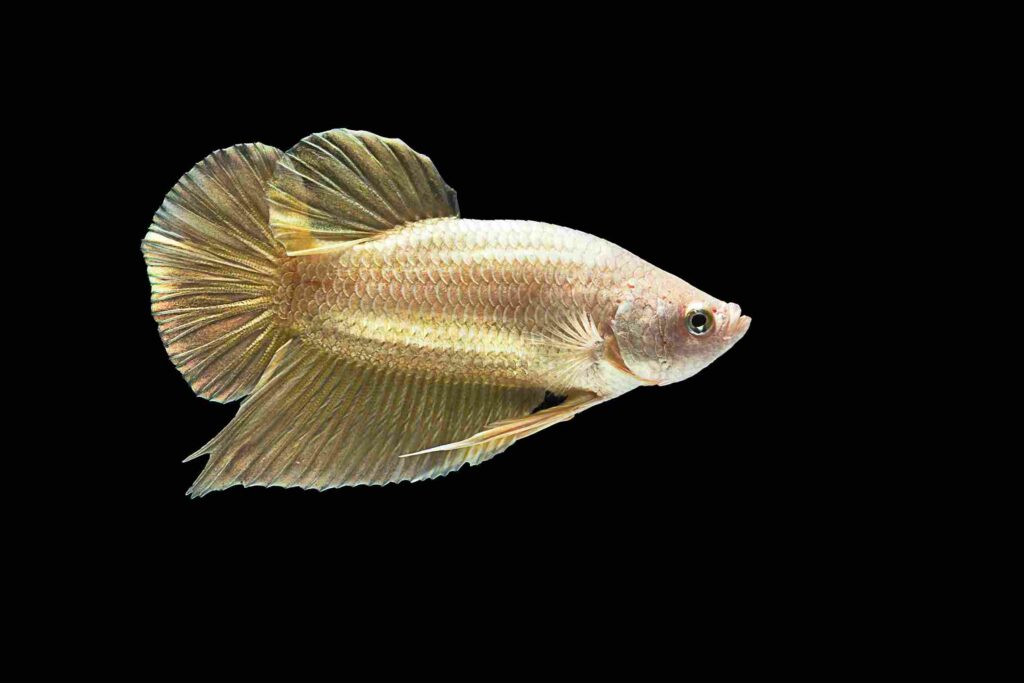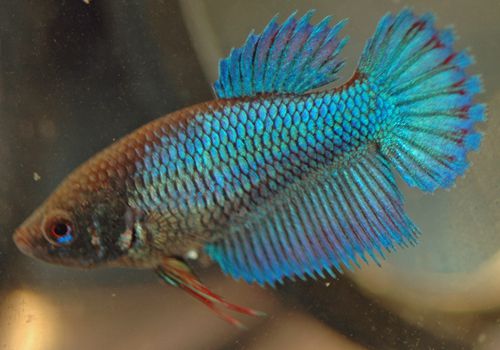Female Betta Fish – Click For A Comprehensive Overview!

She brings calmness to my home, making me feel relaxed and happy. Caring for her is a particular part of my day, and it reminds me how wonderful nature can be.
Female betta fish are vibrant and graceful aquatic pets popular among hobbyists for their stunning colors and serene demeanor. They thrive in well-maintained aquariums with ample space and hiding spots, making them delightful additions to any home aquarium.
In this article, we’ve explored the world of female betta fish, their unique charm, vibrant colors, and serene presence in aquariums. These graceful creatures can thrive and bring endless joy to aquatic enthusiasts with proper care.
Table of Contents:
Introduction To Female Betta Fish – Discover Aquatic Life!
Female betta fish are beautiful aquatic creatures that differ from males’ appearance and behavior. They have shorter fins and less vibrant colors than males but are uniquely charming. From Thailand, they thrive in warm freshwater environments like swamps and rice paddies.

It comes in various colors and patterns, ranging from earthy tones to vibrant hues. They typically reach a size of about 2 to 2.5 inches in length, making them suitable for smaller aquariums. Despite their smaller size, they can display feisty personalities, especially during breeding periods.
1. Appearance Of Female Betta Fish:
Female betta fish have shorter fins and less vibrant colors than males but are still beautiful. They come in various colors and patterns, ranging from earthy tones to vivid hues. These fish typically reach about 2 to 2.5 inches long, making them suitable for smaller aquariums.
Despite their smaller size, they have graceful movements and elegant appearances. Providing them with a well-decorated tank with hiding spots can enhance their beauty and comfort.
2. Colors And Patterns:
This fish displays various colors and patterns, adding diversity to aquariums. They can be found in hues like red, blue, green and earthy tones like brown or olive.
Their patterns vary from solid colors to marbled or speckled appearances, making each fish unique. These vibrant colors and patterns make female bettas popular among fish enthusiasts.
3. How Female Betta Fish Differ From Males:
Female betta fish differ from males in several ways. They have shorter fins and less flashy colors. In terms of behavior, females are generally less aggressive, making them suitable for community aquariums. Physically, females tend to be slightly smaller and possess a stockier body shape than males.
Additionally, females typically lack the long, flowing fins characteristic of male bettas. Despite these differences, female bettas are equally captivating and make beautiful additions to any aquarium.
Read Also: Babajitone.Com Blogging – Navigating The Digital Landscape!
Habitat And Origin Of Female Betta Fish – A Simple Guide!
Female betta fish originate from Thailand and inhabit warm freshwater environments such as swamps, rice paddies, and shallow ponds. These fish are adapted to tropical climates and thrive in temperatures around 59°F to 104°F.
Female bettas coexist with various aquatic plants, snails, and other small creatures in their natural habitat. They prefer calm waters with plenty of vegetation for hiding and nesting.
Over the years, bettas have become popular in Southeast Asian countries like Malaysia, Singapore, Vietnam, and Cambodia, where they are extensively bred for the aquarium trade. Understanding female betta fish’s natural habitat and origin helps create suitable tank environments for captivity.
These fish originate from Thailand and inhabit warm freshwater environments like swamps and rice paddies. They thrive in tropical climates with temperatures ranging from around 59°F to 104°F.
Over time, bettas have gained popularity in countries like Malaysia, Singapore, Vietnam, and Cambodia, where they are bred extensively for the aquarium trade.
Types Of Female Betta Fish – You Should Know!
Female betta fish exhibit a variety of types, each possessing unique characteristics that appeal to aquarium enthusiasts. The wild female betta closely resembles its wild counterpart, betta splendens, showcasing natural beauty and simplicity.

Veiltail females boast long, flowing fins, though not as extravagant as their male counterparts, adding grace to aquarium displays. Crowntail females stand out with fins resembling crowns, offering a striking visual appeal.
Halfmoon females exhibit fins that spread out in a semi-circular or “D” shape when fully extended, creating a captivating display during swimming. Doubletail females, with their genetic mutation resulting in two distinct tails, bring a touch of uniqueness to aquarium setups.
Lastly, Plakat females, known for their shorter fins, offer a more streamlined appearance than other types, appealing to those seeking simplicity. Understanding these variations allows enthusiasts to select the perfect female betta to complement their aquarium’s aesthetic.
Read Also: Aainflight – Elevate Journey With Seamless Connectivity!
Size Of Female Betta Fish – Take A Look Over Them!
Female betta fish typically reach about 2 to 2.5 inches in length, making them relatively small compared to other aquarium fish. Their petite size makes them well-suited for smaller tanks, adding versatility to aquarium setups.
While individual sizes may vary slightly, most female bettas fall within this range. Giant female bettas, a larger variant, can reach sizes of about 2.5 to 3 inches in length, offering a striking presence in larger aquariums.
Providing adequate space and care ensures female bettas thrive and display their vibrant colors and graceful movements to their full potential.
Taking Care Of Female Betta Fish – Most Interesting One!
Taking care of female betta fish involves creating a suitable tank environment to promote their health and well-being. This includes providing a tank size of at least 5 gallons or more, ensuring ample swimming space and stable water conditions.
Setting up the tank with appropriate lighting, filtration, and heating systems is essential to maintain optimal conditions for female bettas. Adding live or artificial plants and decorations offers hiding spots and reduces stress.
Regular tank maintenance, such as water changes and filter cleaning, helps keep the aquarium and the fish healthy. Monitoring water parameters and feeding a balanced diet also contribute to the overall care of female betta fish, ensuring they thrive in their aquatic habitat.
Breeding And Nesting Of Female Betta Fish – Take Analysis One By One!
It involves introducing a compatible male into a controlled breeding tank environment. While females don’t build bubble nests like males, they play a crucial role by laying eggs.

The male then fertilizes the eggs and collects them in his bubble nest. After spawning, removing the female to prevent aggression from the male is essential.
The male betta cares for the nest and fry during their development, ensuring their safety and well-being. A suitable breeding environment with proper filtration and water conditions promotes successful breeding and nesting behavior in female betta fish.
1. Reproduction Process:
The reproduction process of this fish involves introducing a compatible male into a breeding tank. The female lays eggs, which the male fertilizes and collects in a bubble nest.
After spawning, the male cares for the nest and fry, ensuring their safety and development. Removing the female after generating prevents aggression from the male and promotes successful reproduction.
2. Food And Diet:
Feeding these fish a balanced diet is crucial for their health and vitality. They thrive on a protein-rich diet, including prepared dried foods and live or frozen options like brine shrimp and bloodworms.
Offering a top-quality floating micro-pellet or flake food as their primary diet, supplemented with live or frozen offerings a few times a week, enhances their color and overall health.
Feeding them once or twice daily is essential, ensuring they consume as much food as possible within a minute to prevent overfeeding and maintain water quality.
Read Also: Fintech Zoom Dow Jones – Unleash Your Financial Superpower!
Frequently Asked Questions:
1. Can female betta fish live without a male companion?
Female betta fish can live perfectly healthy lives without a male companion. They often prefer to live in groups of other females or community tanks with compatible tank mates.
2. Do female betta fish require different care compared to males?
While female betta fish have similar care requirements to males regarding water quality, diet, and tank setup, they may exhibit slightly different behaviors. Female bettas tend to be less aggressive.
3. How long do female betta fish typically live?
Female betta fish can live for around 2 to 4 years on average, although they can sometimes live even longer with proper care and a healthy environment.
4. Can female betta fish change color over time?
This fish can sometimes change color over time; it’s not as expected or dramatic as with male bettas. Factors such as age, genetics, and diet can all influence their coloration.
Conclusion:
Female betta fish bring vibrant beauty and serene elegance to any aquarium, captivating enthusiasts with their unique charm. With proper care and attention to their needs, these aquatic companions can thrive and provide endless enjoyment for years.
Read Also:




